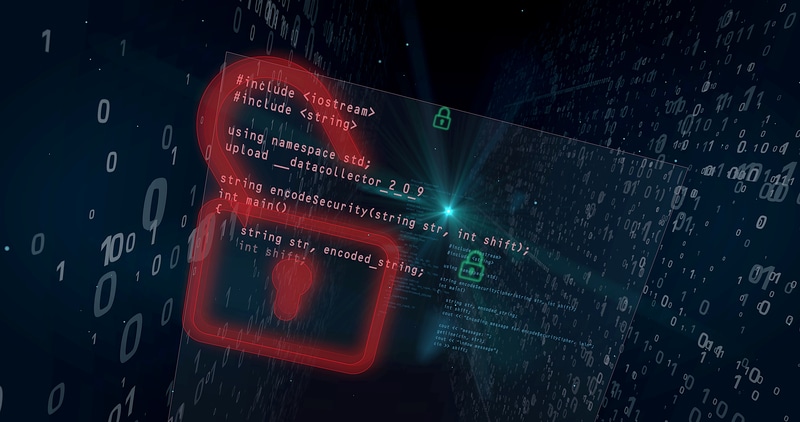
The five email attacks to watch for in 2025
Despite the rise of other means of communication email remains the most commonly used. This makes it attractive to cybercriminals as it offers an entry point to businesses and the gateway that employees rely on to do their jobs.
A new report from Abnormal Security highlights the attacks that we’re likely to see in the next year and shows the need for improved defenses, including the use of AI.

How business function mapping can help align IT and cybersecurity with business priorities [Q&A]
In the modern business world, organizations face the ongoing challenge of aligning their IT and cybersecurity efforts with their business priorities.
The difficulty lies in understanding how your infrastructure supports your business's core functions. Without this understanding, prioritizing cybersecurity initiatives, managing vulnerabilities, and ensuring business continuity remains an uphill battle.

A quarter of organizations suffer AI-enhanced attacks against APIs or LLMs
A new study finds 25 percent of respondents have encountered AI-enhanced security threats related to APIs or LLMs, with 75 percent of respondents expressing serious concern about AI-enhanced attacks in the future.
The research from API specialist Kong shows that although 85 percent say they're confident in their organization's security capabilities, 55 percent of respondents have experienced an API security incident in the past year, highlighting a notable disconnect.

AI impacts on data storage infrastructure
As we've already seen today organizations are struggling with the increasing demands of data infrastructure. Another new report from MinIO highlights how organizations are leveraging object storage for AI, machine learning (ML), and data-intensive workloads.
The survey of over 650 IT leaders 70 percent of enterprise data is in object storage today and this is expected to grow to 75 percent over the next two years.

Enterprises struggle to meet data infrastructure demands
Internal IT teams are being pushed to the brink, balancing the demands of modern data management with limited resources according to a new report.
The study from DataStrike gathered insights from nearly 200 IT leaders and decision-makers, it finds that 55 percent of organizations rely solely on internal IT teams to manage their data infrastructure, with only a small fraction (19 percent) outsourcing these critical functions.

Containers are a weak link in supply chain security
The use of container images is growing fast thanks to their flexibility and convenience, but they can also represent a weak cybersecurity link in software supply chains.
A new report from NetRise looks at the scope and scale of the components and risks found across 70 of the most commonly downloaded Docker Hub container images.

IBM brings optics into the data center to save energy and boost speed
When we think of optical technology it tends to be in terms of transmitting data over long distances. Today IBM is unveiling a breakthrough in optics technology that for the first time puts the speed and power of fiber optics inside servers and onto circuit boards.
Using a new process that replaces electrical wires with optical waveguides,this effectively enables chip connectivity at the speed of light.

The race against AI web scrapers: effective strategies to protect your data [Q&A]
A surge in artificial intelligence (AI), generative AI (GenAI), and machine learning (ML) technologies is creating a massive online appetite for data. These tools are hungry for training data, this has boosted AI web scraping, which sits in a legal gray zone. Sometimes it's legal, sometimes it's not, but what's clear is that it's having ripple effects across online businesses.
We talked to Nick Rieniets, field CTO of Kasada, to learn more about the impact of web scraping and what companies can do to protect their content.

Pro-Russian hacktivists target Europe
A new report shows that 96 percent of attacks conducted by a leading pro-Russian hacktivist group targeted Europe this year, with attackers focusing on influencing public perception and trust over direct technical disruptions.
Based on research and data from more than 135,000 security events in 160 countries, the Security Navigator report from Orange Cyberdefense also reveals that hacktivists were responsible for 23 percent of cyberattacks that directly targeted OT and 46 percent of these attacks resulted in a 'manipulation of control.'

Why it's time for a reset of security metrics [Q&A]
Historically, security metrics have focused on measuring how many attacks are successful and how long it takes for a successful attack to be detected. This is perhaps unsurprising since the bulk of the industry has focused on building tools to detect adversaries.
We spoke to Nicko van Someren, chief technology officer at Absolute Security, to learn why companies focusing purely on defense can create more risk for their organizations, and why instead of focusing on 'time to detection,' it's time to reset security metrics to focus on 'time to recovery.'

The top five most-phished industries
New research reveals the top five industries most frequently targeted by specifically tailored phishing attacks using either the recipient's name, email address, phone number, or company name.
The study from Cofense using data drawn from the Cofense Intelligence product between Q3 2023 to Q3 2024 shows, unsurprisingly, that finance tops the list, accounting for 15.5 percent of all credential phishing emails where the product redacted information from the subject in order to safeguard the recipient.

Over 30 percent of organizations need daily specialist support on virtual desktop issues
A new survey of 1,000 front line IT workers from Nexthink finds that 31 percent of organizations have daily virtual desktop infrastructure (VDI) problems requiring specialist intervention.
A further 40 percent are having issues on a weekly basis, as level one and two support staff are often unable to manage the complexity of VDI.

Holiday deal hunting mirrored by dark web behavior
Just as shoppers heading online for Black Friday and Cyber Monday deals a new report from Bitdefender uncovers interesting parallels with behavior on dark web marketplaces.
Cybercriminals too, it seems, browse for the best deals on an assortment of unconventional goods and services. In a digital underground that mirrors traditional e-commerce in many ways, these markets cater to buyers with specific -- and often illegal needs.

New study highlights the ongoing importance of open source
Free and Open Source Software (FOSS) has become a critical part of the modern economy and it's estimated that up to 96 percent of codebases now include it.
In order to understand the impact of open source The Linux Foundation, in collaboration with the Laboratory for Innovation Science at Harvard, commissioned its latest study into the space and today announces the release of the Census III of Free and Open Source Software -- Application Libraries report.

SMEs put at risk by poor mobile security practices
A new report finds that 35 percent of small business employees or owners report clicking on a phishing link via mobile.
The research, carried out by OnePoll for CyberSmart, among 250 small-medium enterprise business owners or leaders in the UK also finds 30 percent of respondents report losing or having had stolen a mobile phone containing sensitive corporate information, leaving their business more vulnerable to potential cybercriminal activity.

